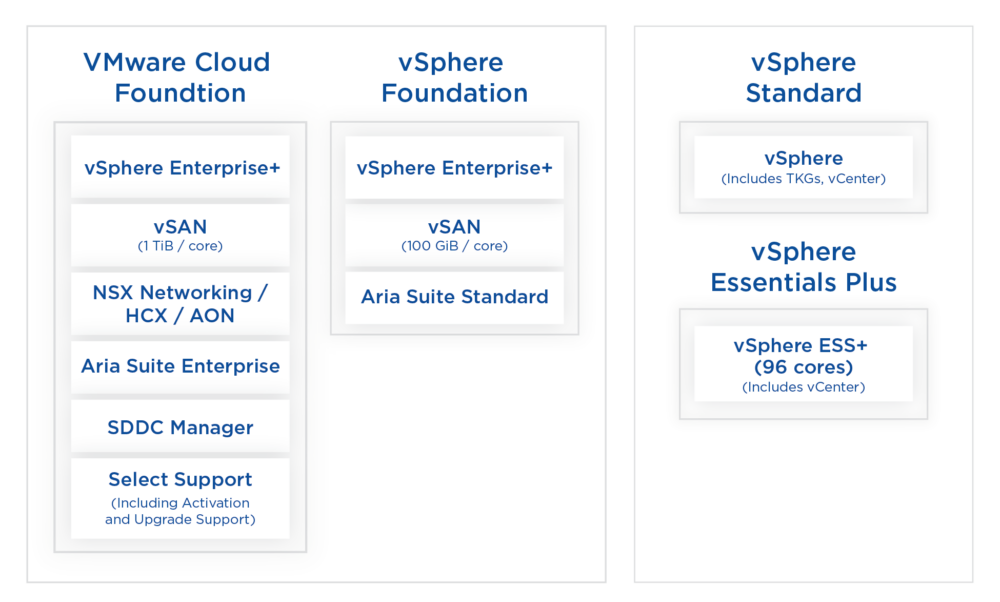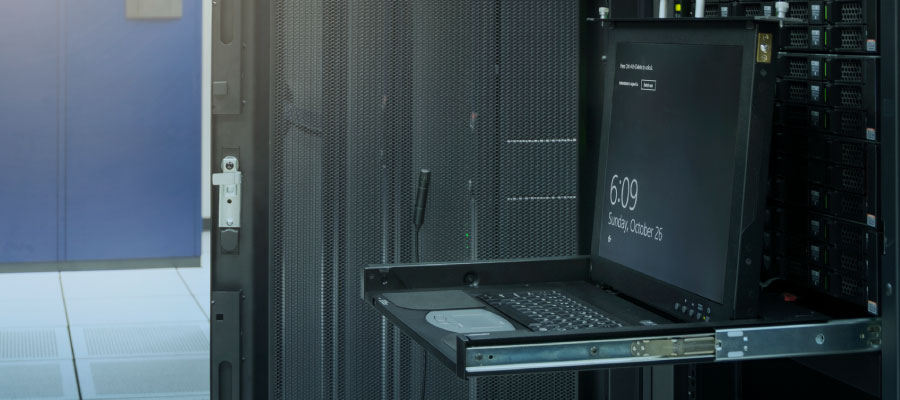In November 2023, Broadcom announced the completion of its acquisition of VMware. Over the last several months, Broadcom has shared fundamental changes to VMware’s portfolio, business model, pricing and more. These adjustments have created a ripple effect across the industry, impacting IT budgets for companies small to enterprise. Below are the most significant changes made to VMware.
1. Moving to a subscription-based model, discontinuing free and perpetual licenses
Companies looking to purchase new, renew, upgrade or receive maintenance support on perpetual licenses must transition to a subscription model. Previously, perpetual licenses were one-time purchases that fell under most company’s CapEx budgets. Moving to a subscription model may require companies to shift these costs to OpEx. Broadcom announced that customers will continue to access their perpetual licenses and receive free zero-day patches for supported versions of vSphere.
2. Condensing the VMware portfolio to two primary solutions with options for add-ons

In addition to the main bundles, add-ons and access to vSphere Standard and vSphere Essentials Plus are available.
3. Calculating pricing per core (with a minimum of 16 cores)
With new product offerings comes new pricing. Previously, VMware required one CPU license for up to 32 physical cores. The pricing for VCF and VVF is calculated based on the number of cores per CPU, with a minimum of 16 cores.
4. Rolling out changes to their partner program and framework
In February 2024, VMware’s partner programs transitioned to Broadcom’s invitation-only Advantage Partner Program. As outlined in Broadcom’s Partner FAQ, they’ll begin rolling out invitations to VMware partners, starting with resellers. Invitation timelines may vary by partner route and market.
Broadcom’s VP of Global Partner and Commercial Sales shared updates to the partner program, including a net margin model; streamlined pricing, systems and tools; predictable partner profitability and deal protection; and increased resourcing and support.
Ways to mitigate VMware’s rising costs
Every company’s next step forward will depend on various factors, including current environments, utilisation, compatibility, budget, resources, etc. Below are potential considerations and strategies to reduce subscription costs or make room in your IT budget for the increase.
Assess your current environment and utilisation
You’re overpaying for an additional license if your servers have less than 16 cores per CPU. That said, now’s the time to identify servers that are underutilised, idle or spare hosts since you’ll be paying for each core. Depending on your situation, you may be able to upgrade, downgrade or refresh hardware to get the most out of your budget.
Find cost savings opportunities
We know every IT department is challenged to do more with less and increasing VMware subscription costs have only added more pressure. Several opportunities for cost reduction include delaying hardware refresh cycles by extending the life of your equipment and switching to third-party Data Centre Maintenance to address support costs.
Evaluate your storage strategy
VCF and VVF include vSAN in the cost:
- VCF: 1 TiB of vSAN per core
- VVF: 100 GiB for each core deployed in a vSAN cluster
Customers can utilise the vSAN that’s included with their respective bundle. However, exceeding the allotted amount could overwhelm your budget and incur additional capacity charges. Read more about calculating cores for vSAN in Broadcom’s article.
Exploring VMware alternatives
There’s no telling what the future holds for VMware post-Broadcom acquisition. As VMware competitors begin to target the company’s significant customer base, IT decision-makers must weigh the cost, risk and time associated with considering an alternative solution.
“A large-scale migration from VMware’s server virtualization platform will require multiple person-years of effort, considerable one-time project costs and business risk, and have an elapsed duration of 18 to 48 months.” — Gartner
We’ve compiled a list of the top VMware alternatives and their advantages and disadvantages based on findings from Ace Cloud Hosting and reviews on Gartner Peer Insights.
| Provider | Advantages | Disadvantages |
| Nutanix | Manage multiple clusters through a single console Customisable and easy to scale Helpful and reliable support Built-in security | Requires the purchase of new hardware Complex licensing structure Uses significant system memory Limited communication on software updates, patches or releases Requires specialised knowledge |
| Microsoft Hyper-V | Live migration, replication and integration with Windows Versatile platform for Windows and Linux operating systems Offers nested virtualisation Easy to customise and make changes Intuitive interface Able to log into multiple domains simultaneously | Limited administrator notifications Must use third-party applications to monitor the replication status between hosts Uses a large amount of space Performance can be slower than other options |
| Citrix | Live migration, high availability and disaster recovery Secure with no single point of failure Scalable, supporting up to 288 physical cores and 12TB of RAM per host Centralised dashboard with visibility and insights into resource utilisation | Requires the purchase of new hardware Limited support for guest operating systems Complex to set up and manage |
| Proxmox | Free with optional support plans Live migration and replication Supports Windows and Linux environments High availability features automatically manage node failures Open-source flexibility allows customisation | Learning curve Limited support for third party plugins for backup and recovery |
| KVM | Free and open source Robust security features Flexible deployment Enterprise-grade features without licensing fees | Limited support options Integration with non-Linux may require extra effort |
Depending on current platforms, integrations, functionality, etc., moving away from VMware may not be possible for every organisation. Before jumping off the VMware ship, assess your current products and their capabilities to avoid creating a more expensive problem.
How Service Express can guide you through the changes
We understand this change is widespread and impacts many — if not all — of our customers. Although the waters seem a tad murky, the good news is that you don’t have to navigate them alone. Ultimately, our priority is to help our customers get the most out of their budget without compromising performance. Our team of Infrastructure Sales Consultants is equipped to weigh your options and advise on the best strategy to maximise your VMware investment.




